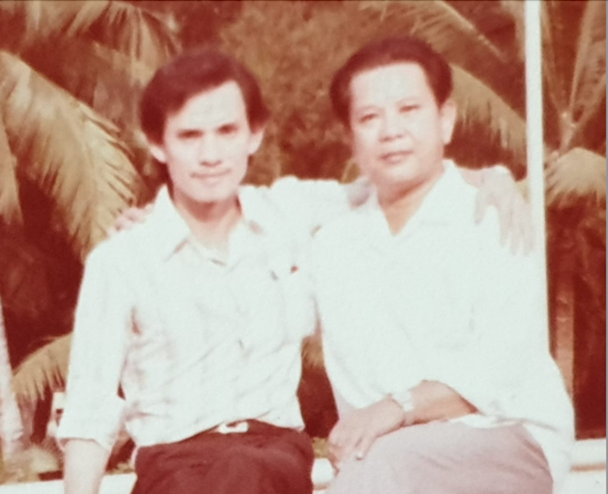Pioneer musician: Samuel Ting Chu-San
Samuel Ting Chu-San (1926–2007) was born in Xiamen, Fujian. In his early years, he studied to be a concert pianist under Russian musician Boetelin1. At 19, he studied vocal music with American music teacher Roderick Scott (1885–1971) at the Fukien Christian University where he distinguished himself by becoming a teaching assistant excelling in vocal, composition, conducting and piano music.
After graduating in 1948, Ting went to Hong Kong to further his studies under vocal musician Hu Ran (1912–1971). In 1953, he relocated to Singapore, where he taught at Chung Cheng High School for two years.
In 1957, Ting won a scholarship to study at the University of Southern California in Los Angeles, where he learnt choral conducting under Charles C. Hirt (1911–2001), vocal music under Karl Laufkotter (1899–1993), and the pipe organ under Irene Robertson (birth and death years unknown).
Heralds Choral Society
On his return to Singapore in 1959, Ting taught at Trinity Theological College, followed by Ngee Ann College. In 1961, he founded the Heralds Choral Society, which held frequent performances in Singapore and abroad. Also under the choral society’s umbrella were the Echo Children’s Choir, Echo Youth Choir, Echo Women’s Choir and Echo Angklung Group. For more than 20 years with Ting at the helm, Heralds Choral Society performed in Australia, Japan, Taiwan, Hong Kong, Thailand, Malaysia, and many cities in mainland China.

To recognise his contribution to music in Singapore, Ting was awarded the Public Service Star (Bintang Bakti Masyarakat, BBM) by the President of Singapore in 1970. He was made the first president of the Association of Composers Singapore in 1980. He later moved to Sydney, Australia, where he continued to teach music and became a member of the Music Teachers’ Association of New South Wales. He translated 36 collections of Western sacred music during his time in Australia.
Original compositions
Ting’s original music compositions include 72 albums of hymns and sacred songs (total of 144 songs), and 15 albums of choral compositions (each album containing at least three pieces). These include Yanyang tian (A Beautiful Sunny Day), Zheli daochu doushi yangguang (It’s Sunshine Here and Everywhere), Huanle wuqu (Joyful Dance), Jianguo jinxing qu (Nation Building March), Women de ge (Our Song), and Huangpu zhongxue xiaoge (Whampoa Secondary School Song). In addition, he also wrote more than 30 vocal solo works in Chinese and English including art songs Ge (Song – H.E.A. D), Muqin (Mother), Wode ge (My Song), Wo zhude defang (Where I Live), Wo dengni zai xiangsi shuxia (Beneath the Lover’s Tree, I Wait for Thee), Shiyu hu shang zuige (Drunken Song on Lake Shihu), and Shantou gushi yuan tingting (The Rock on the Hilltop Looks Like an Elegant Pavilion). His instrumental compositions include piano piece Xipan liangchen (At Dawn By The River Side), violin piece Xinjiapo zhilian (Singapore Romance), and cello piece Daoguo lian (Romance in F).


This is an edited and translated version of 先驱音乐家:丁祝三. Click here to read original piece.
| 1 | Full name and date of birth unknown. |
Goh, Keng Leng. Yinyuejia zhuanji [Biography of musicians]. Singapore: Seng Yew Book Store, 1987. | |
People’s Action Party Central Cultural Bureau, ed. Xinjiapo song: bendi chuangzuo yuequ xuanji[Ode to Singapore: A selection of local compositions]. Singapore: People’s Action Party Central Cultural Bureau, 1968. | |
Singapore Broadcasting Corporation. Topic Of The Week: Interview With Samuel Ting Chu San, 1 July 1990, audio, National Archives of Singapore (accession no. 2011006532). |










